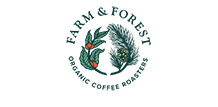Accelerating conservation at new scales
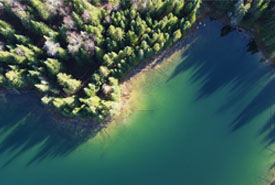
Boreal Wildlands, ON (Photo by NCC)
In the face of climate change and biodiversity loss, the Nature Conservancy of Canada is conserving more, faster
The Nature Conservancy of Canada (NCC) is working at an unprecedented scale to deliver conservation impact. As the largest private land conservation organization in the country, NCC is unlocking solutions to support Canada’s targets to conserve 30 per cent of our lands and waters by 2030.
Accelerating conservation means NCC is delivering conservation impact faster and more extensively than ever before. We’re not only putting our energy and ambition into privately protected and conserved areas, we’re helping others contribute toward Canada’s 30 by 30 goal and lending our expertise in conserving lands of high natural value. We can’t do this alone, and we are committed to collaboration, consultation and bringing people together for change.
Helping nature continue to support life
When habitats are integrated and connected, and entire natural systems are conserved, nature can better deliver essential services that support life. By connecting landscapes that provide nature-based solutions, we’re taking care of places that clean our water, purify our air, absorb and store carbon, and support food security. Protecting connected habitat also supports the species that live there, including close to one-third of Canada’s species at risk.
Projects that are making a difference
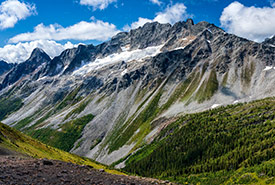
Qat'muk, BC (Photo by Pat Morrow)
Qat'muk, BC
NCC was invited to help deliver the complete and permanent extinguishment of all tenures and development rights in the Jumbo Valley, and to support the Ktunaxa Nation Council (KNC) in their ongoing conservation planning for the establishment of an Indigenous Protected and Conserved Area. NCC is honoured to work with the KNC to help them achieve their vision of fully protecting Qat'muk.
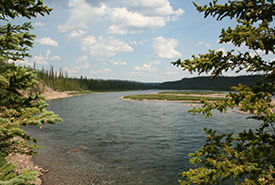
Lockhart River, Thaidene Nëné, NWT (Photo by Parks Canada)
Thaidene Nëné, NWT
Sometimes, the smallest projects carry the biggest impact.
Within a vast area of cultural and ecological significance, NCC purchased a private holding of about one hectare, transferring it to Parks Canada. This removed an obstacle to completing Thaidene Nëné National Park Reserve, influencing the conservation of over 14,000 square kilometres in keeping with the wishes of local Indigenous communities.
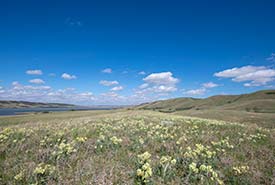
Buffalo Pound property, SK (Photo by Jason Bantle)
Buffalo Pound, SK
You helped us conserve the seven kilometres of shoreline around Buffalo Pound Lake for the sake of threatened grasslands and species at risk. This natural area provides drinking water for 25 per cent of the province’s population.
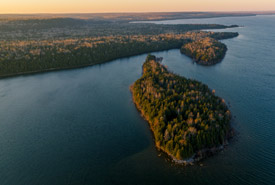
Vidal Bay, Manitoulin Island, ON (Photo by Striking Balance)
Vidal Bay, ON
The project comprises more than 7,600 hectares of shoreline and forest, redefining landscape-scale conservation in southern Ontario. The forests, wetlands and alvars found here capture and store nearly 23,000 tonnes of carbon dioxide a year; the equivalent of taking nearly 5,000 cars off the road annually.
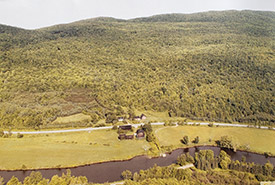
Krieg property, Estrie, QC
Krieg Property, QC
The Krieg property in the Green Mountains Nature Reserve is an idyllic natural area full of life. Its mature forests are home to eastern wood-pewee, a small, threatened songbird. Several
species of spring salamanders also live in the area’s streams. NCC hopes to connect the property to the Green Mountains Nature Reserve, a place of high biodiversity and a well-used outdoor recreation area in Quebec.

Chignecto Isthmus, NS (Photo by Mike Dembeck)
Chignecto Isthmus, NS/NB
The Chignecto Isthmus is the narrow strip of land connecting mainland Nova Scotia to New Brunswick and the rest of North America. Since 2010, you have helped us conserve just over 2,200 hectares on both sides of the border, continuing to steward and expand upon our existing conservation efforts along this critical wildlife corridor.
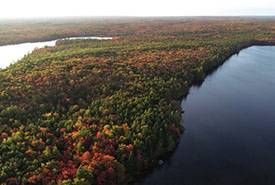
Upper Ohio, NS (Photo by Mike Dembeck)
Upper Ohio, NS
The conservation of rare Wabanaki (Acadian) forest, over 25 kilometres of lake shoreline and 130 hectares of freshwater wetlands in Upper Ohio make this project the third-largest acquisition in NCC’s 50-year history in the province.
This story originally appeared in the summer 2022 issue of the Nature Conservancy of Canada Magazine.
Explore additional content from our summer issue here >
The Nature Conservancy of Canada Magazine is distributed to NCC donors and supporters who contribute $100 or more per year.

